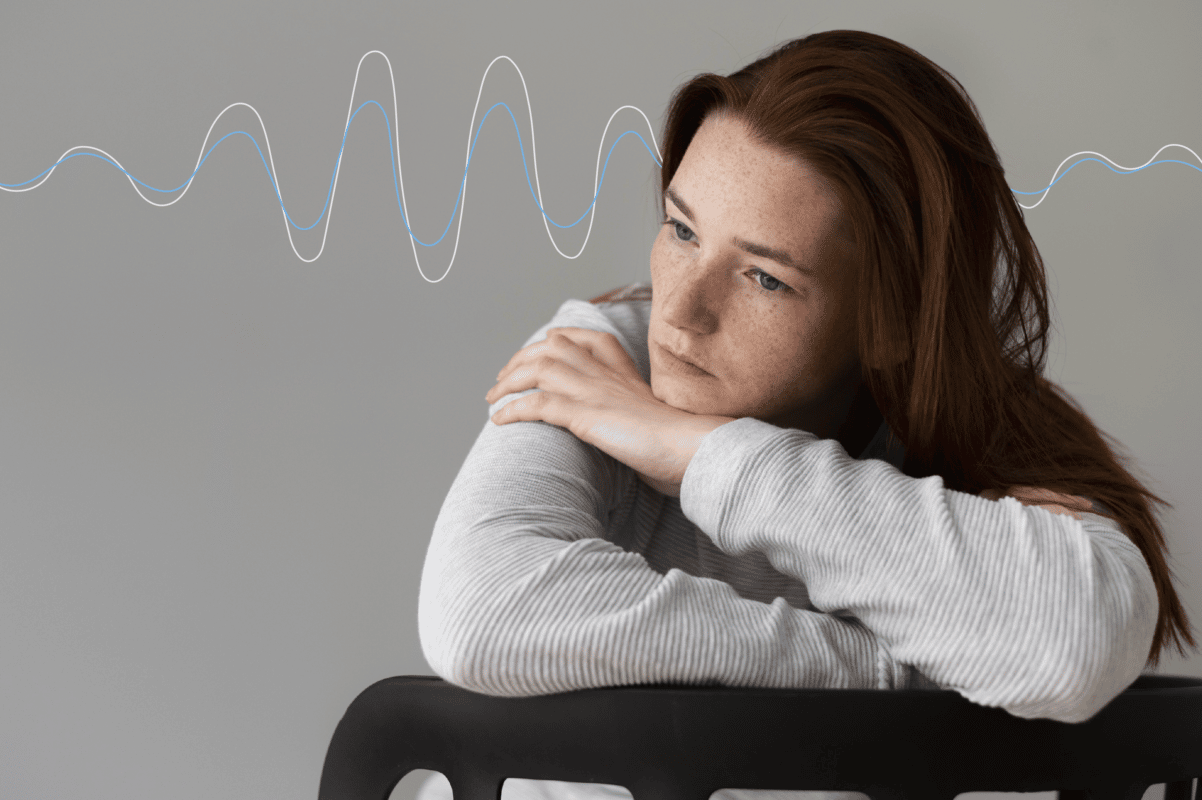
How to Use PEMF to Increase Sports Performance
PEMF therapy is emerging as a powerful tool to enhance sports performance. It offers athletes a noninvasive way…

Your brain’s top priority is always keeping you safe and alive. Because of this, your brain is wired to be cautious and reactive. It’s always on the lookout for and highly sensitive to anything that might be perceived as a threat to you in the environment. Multiple pathways carry information quickly straight from your senses […]
Your brain’s top priority is always keeping you safe and alive. Because of this, your brain is wired to be cautious and reactive. It’s always on the lookout for and highly sensitive to anything that might be perceived as a threat to you in the environment. Multiple pathways carry information quickly straight from your senses to your brain to allow you to react fast.
When remembering a deadly predator’s territory meant the difference between life or death, this heightened threat sensitivity was an evolutionary advantage that helped our species survive lethal threats. However, today your brain finds too many reasons to sound the alarm causing these brain circuits to activate too frequently.
An unexpected bill sends your heart racing. An unpleasant comment from your partner has you fuming for hours. A rude driver cutting you off has you feeling like you could resort to violence. As a result, your amygdala, the fear center of your brain, can get stuck on “high alert”, which can have serious negative consequences for your mental and physical health.
Because our lives aren’t frequently in mortal danger these days, this reactivity can now lead to chronic stress and anxiety. When you understand how and why your brain responds with fear, you can take steps to lessen its activation to live a calmer, healthier, more peaceful life.
Table of Contents
Anxiety is a leading mental health epidemic globally. According to the World Health Organization, in 2017, 3.8 percent — or about 284 million people worldwide — had an anxiety disorder.

But what exactly is it?
You may have seen anxiety and worry used interchangeably. They are two different things. Worrying is thinking about a potential problem, and anxiety is feeling and showing it in your body.
They both start in your brain, but anxiety shows up more as symptoms, actions, and behaviors. Oftentimes, anxiety doesn’t have one specific conscious cause that you can pinpoint and is just an underlying condition that is exhibited physically. Physical symptoms of anxiety include:
In your brain, anxiety involves the limbic system interacting with the amygdala, hippocampus, and hypothalamus, to turn on the fear circuit. Because anxiety evokes the fear response, your body activates the fight-or-flight alarm and releases stress hormones, like cortisol and adrenaline. Being in a continual state of stress can result in serious damage to your brain and body.
A healthy well-balanced brain and nervous system will generate the right brain waves at the appropriate levels at the right times. Your brain produces five types of brain waves, which are electrical impulses between neurons that communicate actions, emotions, and thoughts:
(Go here for an in-depth explanation of each type.)
An anxious brain usually exhibits decreased alpha waves, increased beta waves, and low delta and theta waves. Anxiousness and feelings of panic can be caused by the thoughts and fears in your brain, but they can also be the result of your brainwaves. In that case, they are chemically driven states stemming from an imbalanced and dysregulated brain.

There’s always some electrical activity in your brain, whether you’re aware of it or not. It’s how your brain functions. At various times of the day, depending on what you’re doing, any one type of brain wave will be dominant.
Alpha brainwaves are most commonly associated with focus and being in a calm, relaxed state. If you’ve ever been immersed in what you’re doing, lost all sense of time and self, and are extraordinarily productive — you’ve experienced a burst of alpha waves in what’s called a “flow state.”
Research shows that increasing the production of alpha waves can reduce stress and anxiety and allow people to maintain more focus. Another study suggested that increasing both alpha and theta activity in the brain’s occipital lobes helped decrease anxiety and improve functioning in those with generalized anxiety disorder.
There are many ways you can encourage your brain to increase its production of alpha waves and calm anxiety naturally.
The health benefits of meditation have been overwhelmingly validated by science. One study from Carnegie Mellon University found meditating for 25 minutes a day for three consecutive days reduced stress levels. Harvard research showed beneficial physical brain changes after just eight weeks of meditation.
Science has also linked meditation to increased alpha waves. Studies on Buddhist monks show that as monks progress in their practice, alpha waves increase in their brains. Fortunately, you don’t have to meditate as much as a monk. Even a few minutes a day can boost your alpha brain waves.
EEG testing on people practicing meditation reveals that meditation affects brain wave production even after the meditation session ends. A regular meditation practice can change your default brain wave activity. While different types of meditation will have different specific effects, what is most important for altering your brain waves is to make meditation a part of your daily routine.
Meditation doesn’t have to be difficult. Perhaps the most popular form of meditation, mindfulness meditation, is a great place to start. Or you can begin to practice with just a few minutes each morning or take one-minute meditation breaks throughout your day.
Studies have shown that mindfulness, like meditation, can lead to increased alpha-wave activity. Very simply, mindfulness is a way of thinking. It’s being aware and being aware of your awareness. It’s training your brain to pay attention and focus and notice what’s happening as it’s happening. It’s learning to direct your attention to your present experience, including your mind, body, and environment.

Your brain is an electrical organ. You can alter your brainwaves by emitting electromagnetic waves, called Pulsed Electro-Magnetic Field (PEMF) therapy. These are safe portable devices, usually in the form of headbands, that you can purchase and use at home while you meditate or just relax.
Omnipemf’s Wearable PEMF products send pulsed magnetic energy into your body. These energy waves work with your body’s natural magnetic fields to alter electrical activity in your brain and elsewhere. Research shows that this therapy has many benefits. including speeding recovery, improving well-being, and reducing anxiety.
Wearable technology is already changing health care and consumer electronics. Its integration into personal care has the potential to transform behavioral health care.
Exercise: Another way to boost your alpha waves is through high-intensity workouts. When you exercise, you release endorphins that give you a joyful “high” feeling After, when you come down and are resting, your brain has increased alpha waves.
Deep breathing: Deep breathing can effectively engage your parasympathetic nervous system, stimulate your vagus nerve, and decrease anxiety. Research suggests that it may also boost alpha activity in key areas of the brain.
Yoga: Studies are showing that yoga practices can change your brain structure as well as brain waves. Yoga seems to have positive effects on brainwave activity in terms of stimulating the activation of alpha, beta, and theta brainwaves, which are associated with improvements in cognition, memory, mood, and anxiety.
Stacey Colino, April 26, 2022, How stress can damage your brain and body, The Washington Post,
June 30, 2020, Stress, Anxiousness, and the Brain Wave Connection, Neuroscience,
Alvin Powell, April 9, 2018, When science meets mindfulness, The Harvard Gazette,
NeoRhythm has not been evaluated by the FDA. These products do not claim to diagnose, treat, cure, or prevent any medical conditions. Always consult your medical doctor regarding any health concerns.